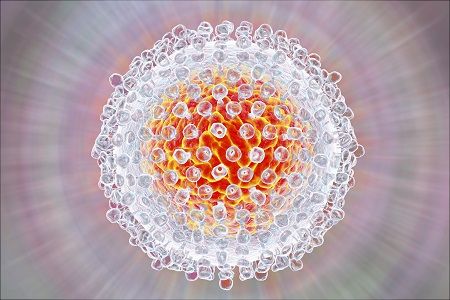Article
Hepatitis C Treatment Can Be Monitored by Metabolics, Researchers Say
Author(s):
Being able to view the cellular-level mechancial changes could allow doctors to sooner gauge how direct-acting antivirals are treating — or failing to treat — HCV.

A recent study has demonstrated that metabolics can show mechanical changes at the cellular level that offer insights into how some hepatitis C virus (HCV) and antiproliferative drugs are working before their pharmacological effects are apparent.
The study was conducted by Adrian Keogh, of the Department of Clinical Research at the University of Bern in Bern, Switzerland, and colleagues.
The fact that most diseases involve changed metabolic patterns on the cellular level is well-documented, particularly in cancer. HCV can lead to cancer, and may cause profound metabolic alterations.
“Understanding how host cell metabolic pathways can be hijacked by oncogenic viruses and ultimately by cancer cells should offer new avenues for therapy,” researchers wrote.
New treatments for HCV are needed, as the virus affects about 3% of the global population. The goal of treatment has been eradication of the disease, which stops inflammation of the liver, and which, in turn, lowers the risk of hepatocellular carcinoma (HCC). Interferon-a (IFN) along with ribavirin (RBV) was the standard treatment until the advent of direct acting antivirals (DAAs), which quickly became the gold-standard HCV treatment.
However, resistance to DAAs is a growing clinical problem “that is incompletely understood,” according to the researchers. There’s also a need for chemotherapeutic agents to effectively treat HCC, researchers added.
Derivatives of both non-steroidal anti-inflammatory drugs (NSAIDs) and the analgesic agent diflunisal appear to inhibit HCV replication as well as show antiproliferative activity in hepatoma cells.
“Diflunisal derivatives have frequently been reported to possess several biological activities, including anticancer, anti-HIV, anticonvulsant, antimicrobial, and anti-inflammatory properties,” researchers wrote.
But scientists do not understand the mechanisms that underlie those properties. In order to investigate, the researchers conducted an investigation using gas chromatography-mass spectrometry (GCMS).
“We undertook a metabolomic investigation of the lead molecule compound 3b compared to its parent molecule diflunisal,” authors explained. “We used target cells for this molecule, two hepatoma cell lines with widely different cell biologies — HepG2 and Hep3B — in an effort to unmask metabolic information pertinent to this drug’s mode of action.”
They found that the metabolic pathways in the two hepatoma cell lines were affected differently by the lead molecule compound 3b. The authors suggest that the difference is because HepG2 is hepatitis B virus (HBV)-negative and non-tumorigenic, “while Hep3B is HBV-positive and tumorigenic”.
The tumor suppressor protein called p53 and cyclooxygenase may also play a role in the differences. The results of the present study also showed that compound 3b elicited a dose dependent response from both HepG2 and Hep3B cells.
A finding that the researchers described as “surprising” was that so few metabolic changes were common to both cell types, adding that when a metabolite changed in both types, the change was converse. There were only three alterations that were the same and in the same direction in both cell types.
“It is very likely that novel antiviral and anticancer drugs leave a unique metabolomic footprint on target cells,” the authors concluded, noting that metabolomics can provide a “new toolbox in the field of medicinal chemistry”.
The study, “A Novel Anti-Hepatitis C Virus and Antiproliferative Agent Alters Metabolic Networks in HepG2 and Hep3B Cells,” was published online in the journal Metabolites.
Related Coverage:
Hepatitis C Elimination Hinges on Improved Monitoring, Modest Investment, Report Says
Direct Acting Antiviral Treatment for Patients with HCV at Opioid Treatment Programs Shows Promise
Biomarker Assessment May be Useful in Monitoring Immunotherapy Outcomes in HCV Patients





